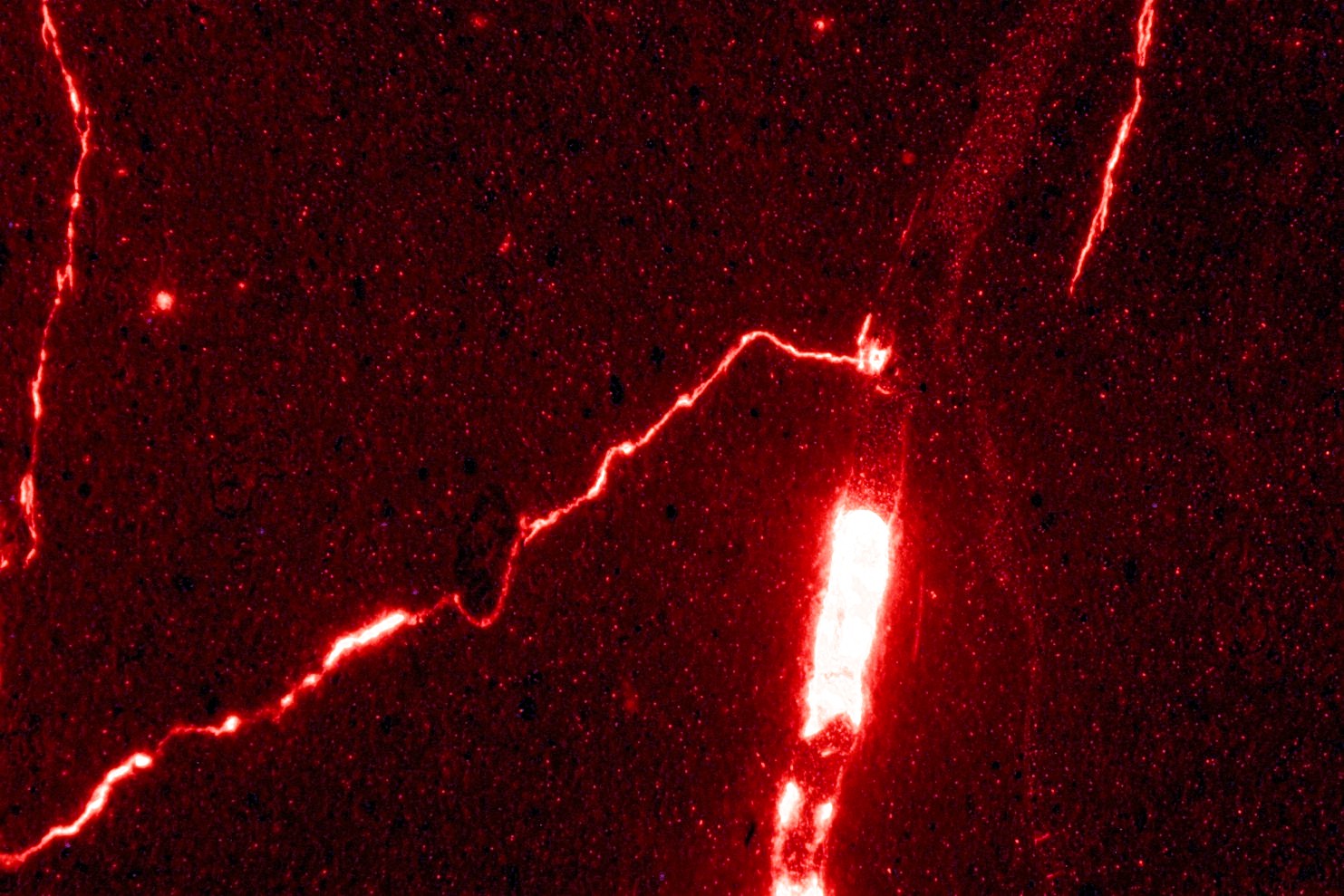Fluorescence Petrography
Fluorescence Petrography
Fluorescence Petrography (Epifluorescence Petrography) involves the observation of rock thin sections under incident UV light excitation. The technique can be enhanced through the impregnation of samples with resin containing dyes which fluoresce brightly under UV light (various dyes can be used which typically show red, yellow or blue fluorescence).
Key applications to petroleum geology include:
- Identification of petroleum fluid inclusions and estimation of API gravity based on fluorescence colour/intensity
- Identification of ghost fabrics in otherwise featureless crystalline carbonates
- Identification of growth zones in mineral cements
- An aid to mineral identification
- Identification of fractures, particularly micro-fractures which are not normally visible
- Identification of oil staining, both within pores and along the margins of fractures.
Transmitted light view of a thin section from foreslope laminite facies characterised by weakly inclined semi-continuous organic-rich laminae. Secondary de-dolomite, Permian Zechstein of near-shore well, NE England. Field of view = 1.7mm.
Mouse over view shows same thin section under UV light revealing detail of ghost structures not seen under transmitted light.




